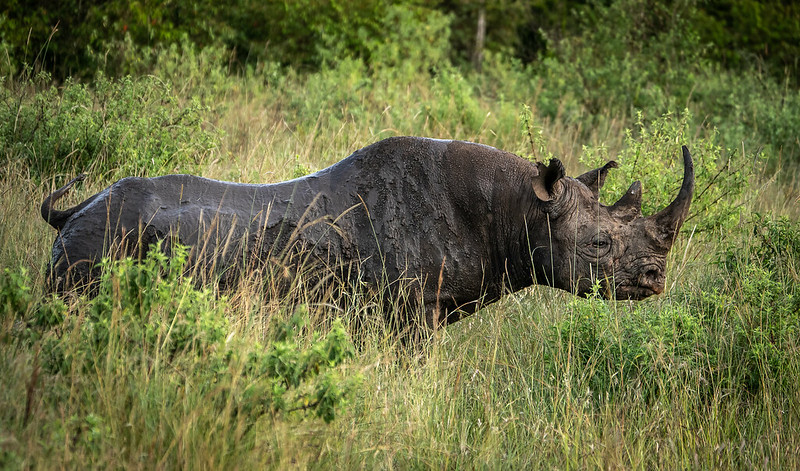Mud baths and feathered friends: Rhinos love their solitary lives but for how much longer?
21 September 2018
Half a million rhinos are believed to have roamed the earth at the beginning of the 20th century, today they cling on only in protected areas.
Rhinos are the second largest land mammal on earth behind only the elephant. Five species of these iconic giants – each individual weighing up to 2,000kg – have spread from Africa to Asia.
For the most part, rhinos are solitary animals and avoid each other. But some species, particularly the white rhino, may live in a group, known as a crash. These crashes are usually made up of a female and her calves, although sometimes adult females are seen together. Males on the other hand, like to be left alone, unless in search of a female to breed. They are very territorial, and mark out their area of land with faeces. In fact, rhinos use pongy piles of poo to communicate with each other, as each individual’s dung smells unique.
They may rarely hang out with each other, but they spend a lot of time with their feathered friends. Rhinos are often seen with oxpeckers perched on their back, which live off the pesky parasitic insects living in the rhino’s thick skin. This is a mutualistic relationship, with both the rhino and the oxpecker benefitting. The oxpeckers get food and the rhinos get pest control. The birds’ loud cries help alert their big buddies of potential danger, too.
During the heat of the day, these magnificent mammals can also be found sleeping in the shade or wallowing in muddy pools to cool off. They love to get mucky, as mud acts like a natural sun block protecting their skin from the strong sun and wards off biting bugs, too. On hot days, rhinos have been spotted relaxing in the mud for up to three hours.
The decline and fall of the giants
At the beginning of the 20th century, 500,000 rhinos are thought to have roamed Africa and Asia. But today very few survive outside national parks and reserves. Persistent poaching and habitat loss over many decades has ravaged their numbers.
Two species of rhino in Asia – Javan and Sumatran – are critically endangered, with just a small population of the Javan rhino still clinging to survival on the Indonesian island from which they get their name.
The third Asian species however is faring better. Successful conservation efforts have helped the greater one-horned (or Indian) rhino, to increase in number, with their status officially changing from Endangered to Vulnerable. However, the species is still poached for its horn.
In Africa, southern white rhinos, once thought to be extinct, now thrive in protected sanctuaries and are classified as near threatened. But the western black rhino and northern white rhinos have recently gone extinct in the wild. The only three remaining northern white rhinos are kept under 24-hour guard in Ol Pejeta Conservancy in Kenya. Black rhinos have doubled in number over the past two decades from their low point of fewer than 2,500 individuals, but total numbers are still a fraction of the estimated 100,000 that existed in the early part of the 20th century.
While the conservation world frantically delivers on plans to prevent the extinction of the species, the rhinos themselves go about their daily business of being rhinos. They continue to mate, raise young, mark territory, coexist with other species and enjoy themselves with cooling mud baths. But for how much longer?

BACK




